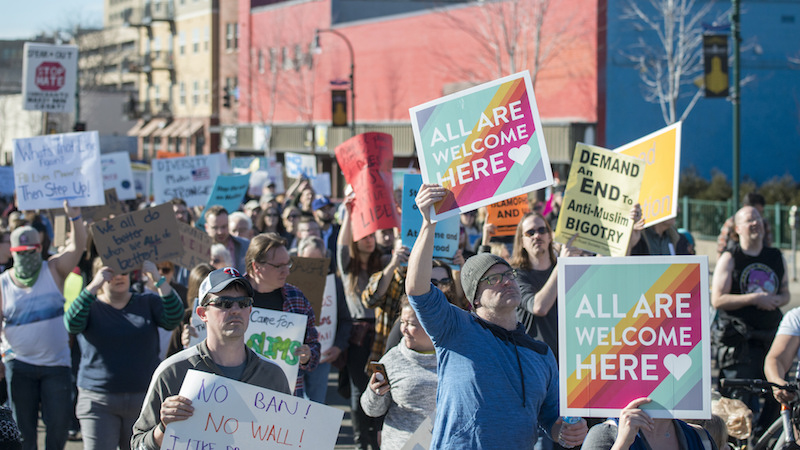President Donald Trump, in keeping to his campaign promises, passed an executive order in January 2017 intended for those residing in the United States illegally, dubbed “aliens”. Through this order, the Trump administration aims to crack down on undocumented immigrants by increasing immigration law enforcement and punishing sanctuary cities by withholding federal funds. The administration believes that sanctuary cities encourage illegal immigration and compromise public safety, using the cases of Sarah Root, Grant Ronnebeck and Kate Steinle, among others, in which murders were committed by undocumented immigrants, as support for this claim.
A sanctuary city is a broad term for a jurisdiction that protects undocumented immigrants from deportation despite what the federal government mandates. Each sanctuary jurisdiction is able to enact its own specific policies to tackle the issue. Generally speaking, they prevent the federal government from detaining aliens who committed a crime beyond their release date, or questioning individuals about their immigration status. Without these measures, those targeted would be more fearful of sending their children to school, using health services, or reporting crime.
The Sanctuary Movement began in the early 1980s, when federal immigration policies during the Cold War made it difficult for Central Americans fleeing from political repression and violence to seek asylum. Hundreds of churches, synagogues, and other religious organizations provided a safe haven, material goods, and legal advice for these people. Approximately 300 cities, counties, and states across the country have been identified as sanctuary jurisdictions. In a time of uncertainty for undocumented families, these sanctuary cities are vital.
But how much power does Trump truly have over federal funds? The executive order aims to “ensure that jurisdictions that fail to comply with applicable Federal law do not receive Federal funds, except as mandated by law”. This means that the edict does not touch mandatory funding, such as those that finance health care programs, infrastructure, disadvantaged schools, subsidized housing, and food stamps. However, the funding that will be affected is ambiguous. Cutbacks may impact sewer and water grants, medical equipment required by first responders, and special transportation grants that were introduced under President Obama’s presidency. Otherwise, funding cuts may target a few smaller programs including grants for justice assistance, police officer hires, and programs that help fight violence against women, depending on how the bill is applied.
Reactions towards the order have been mixed. Texas, one out of 25 states that initiated similar legislature, may become the first state to ban sanctuary cities. A new bill, SB4, dashed through the state legislature. If passed, it would force local law enforcement authorities to comply with federal regulations. Local authorities must enforce immigration laws and agree to deportation requests from the Immigration and Customs Enforcement, or otherwise lose state funding.
But many are rejecting Trump’s initiatives. Sante Fe Mayor Javier Gonzales, among others, claims that he will fight the order and make up for lost funds through other means. To do otherwise, he claims, would be economically disadvantageous due to labour shortages. Gonzales asserts, “The ‘new immigrants’, they play a critical workforce component, and they provide the right skills and needed skills to be able to offer the services that have made Santa Fe so great.” Similarly, San Francisco affirms that it will remain a sanctuary city and is the first city to file a suit against Trump, claiming that punishing sanctuary cities is illegal. Gonzales believes that what the country truly needs is comprehensive immigration reform. Rather than using tax dollars to fight illegal immigration, reform should provide these ‘aliens’ with economic opportunities to shape America for the better.
Cover Photo: Solidarity March with Immigrants and Refugees (2017), by Fibonacci Blue via Flickr. Licensed under CC BY 2.0.
Disclaimer: Any views or opinions expressed in articles are solely those of the authors and do not necessarily represent the views of the NATO Association of Canada.




